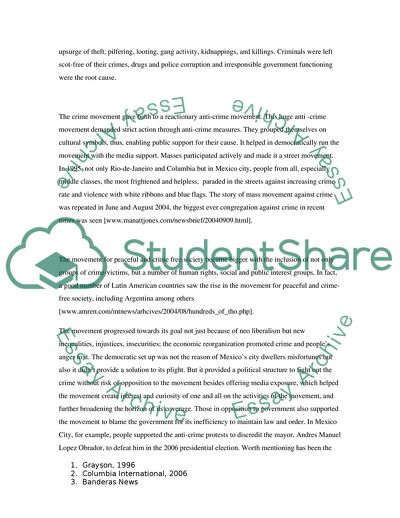Cite this document
(Mexico Police Corruption and Insecurity of City Dwellers Article, n.d.)
Mexico Police Corruption and Insecurity of City Dwellers Article. https://studentshare.org/social-science/1723123-mexico-police-corruption-insecurity-of-city-dwellers
Mexico Police Corruption and Insecurity of City Dwellers Article. https://studentshare.org/social-science/1723123-mexico-police-corruption-insecurity-of-city-dwellers
(Mexico Police Corruption and Insecurity of City Dwellers Article)
Mexico Police Corruption and Insecurity of City Dwellers Article. https://studentshare.org/social-science/1723123-mexico-police-corruption-insecurity-of-city-dwellers.
Mexico Police Corruption and Insecurity of City Dwellers Article. https://studentshare.org/social-science/1723123-mexico-police-corruption-insecurity-of-city-dwellers.
“Mexico Police Corruption and Insecurity of City Dwellers Article”. https://studentshare.org/social-science/1723123-mexico-police-corruption-insecurity-of-city-dwellers.


